WILDLIFE CRUELTY
Western Cape takes aim at snaring, a cruel and damaging way to hunt
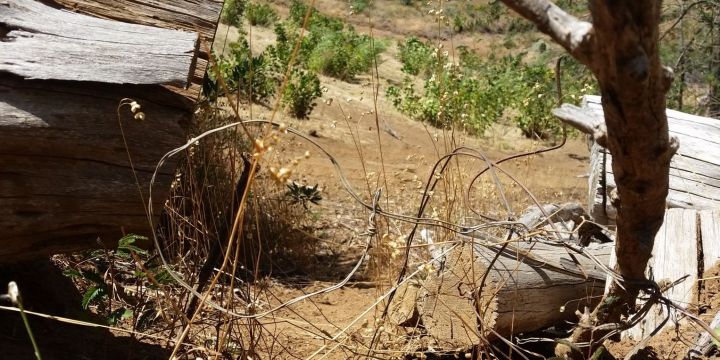
Made from rope, wire, cable or nylon that cut into the skin of animals, snaring is one the cruellest forms of hunting and has been a growing issue across the Western Cape in recent years, with disastrous impacts on wildlife and biodiversity.
As a result of increasing incidents of animals discovered alive in snares, the Western Cape Snare Response Plan this week launched a coordinated response strategy for the province to ensure an efficient reaction to snaring incidents through a network of partner organisations.
The Cape Leopard Trust initiated the strategy with CapeNature, Kogelberg Biosphere, Wildlife Forensic Academy and the Cape of Good Hope SPCA. The response includes improved training, data collection and awareness about snaring in the Western Cape.
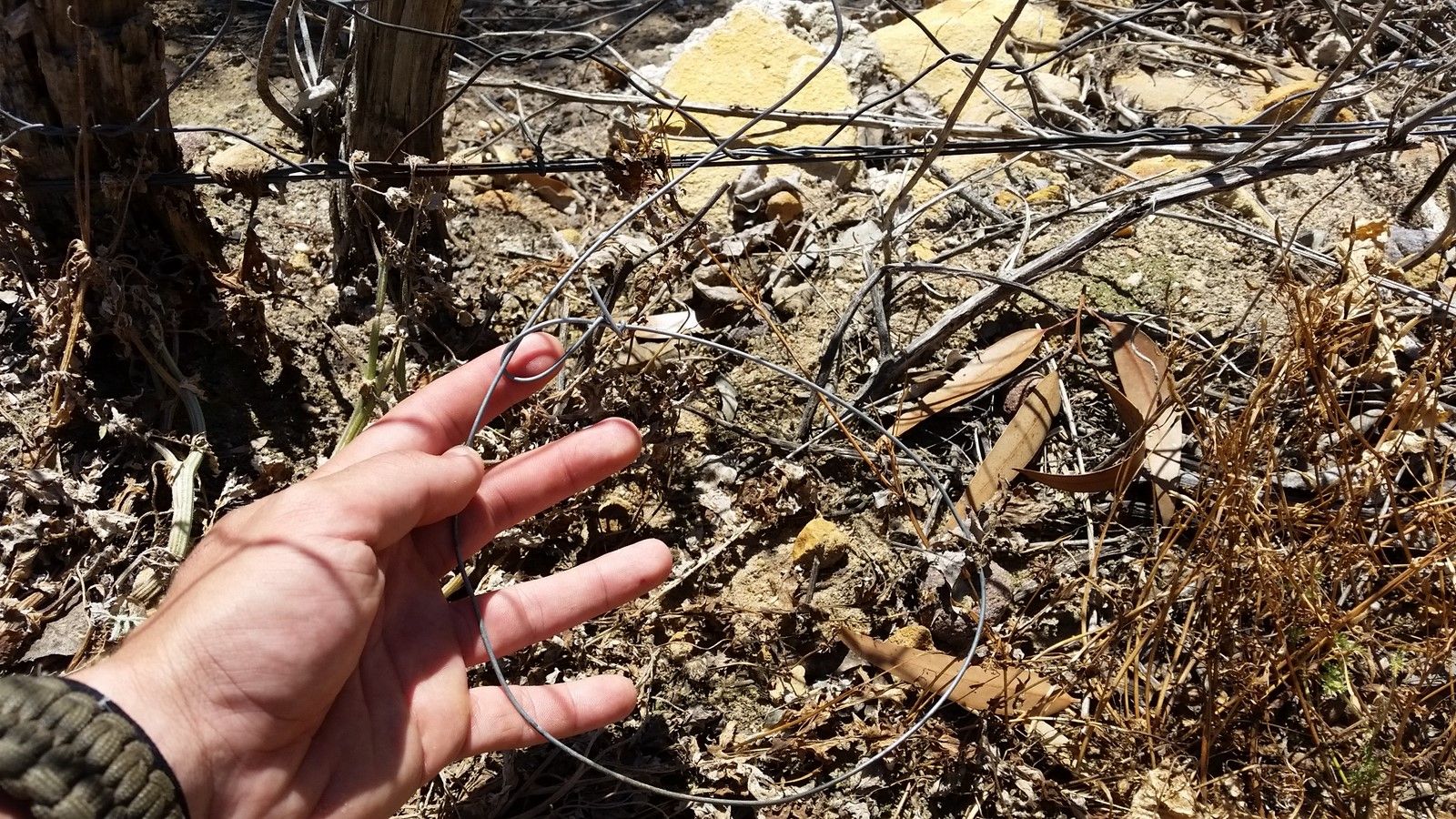
An example of a wire snare. (Photo: Cape Leopard Trust)
The Cape Leopard Trust research and conservation director Katy Williams explained that a snare is a simple piece of wire, cable, rope or nylon tied into a noose. The noose is anchored and positioned in a way to catch animals by the foot, head or body.
“Snares are often set to catch game meat species like small antelope and porcupine, but they are indiscriminate and take a huge toll on the entire ecosystem, also impacting predators like caracals and leopards,” she said.
The Cape Leopard Trust is currently conducting further research into what is driving the use of snares, but the poor economic situation and joblessness are most likely contributing factors behind its rise in recent years.
Western Cape Snare Response Plan
The plan was launched on 1 August at Kirstenbosch Gardens as part of the broader Snare Free initiative supported by the International Fund for Animal Welfare and the Rolf-Stephan Nussbaum Foundation.
It gives everyone with a telephone the means to report snaring when they see it; to alert the correct authorities to the presence of illegal snaring; and to ensure that ensnared animals are able to be rescued should they be found alive.
The Cape Leopard Trust CEO Helen Turnbull said: “Snare Free is merely a first step in a coordinated effort to investigate and respond to the increasing snaring threat, and a lot of work still lies ahead as the plan evolves. Given the number of snares uncovered in targeted areas, we are certain this is just the tip of the iceberg.”
Snaring harms Western Cape biodiversity and wildlife
In June 2022, the Cape of Good Hope SPCA said it had seen an increase in illegal snaring, threatening animal life in the urban areas of the southern peninsula.
Its wildlife department was responding to at least two call-outs a month to retrieve animals caught in active snares across the Constantia Valley, Fish Hoek and down to the Cape Point Nature Reserve.
“We have seen a pleasing decrease in snare activities in areas that were previously heavily snared, thanks to a concerted awareness campaign, increased snare patrols and ongoing media attention,” said Jon Friedman, wildlife department supervisor at the Cape of Good Hope SPCA.
“Poachers are however also moving their hunting/trapping grounds to new areas, where there is less focus by land-owners on illegal snaring, so their challenge now is to find these areas and de-snare them as quickly as possible.”
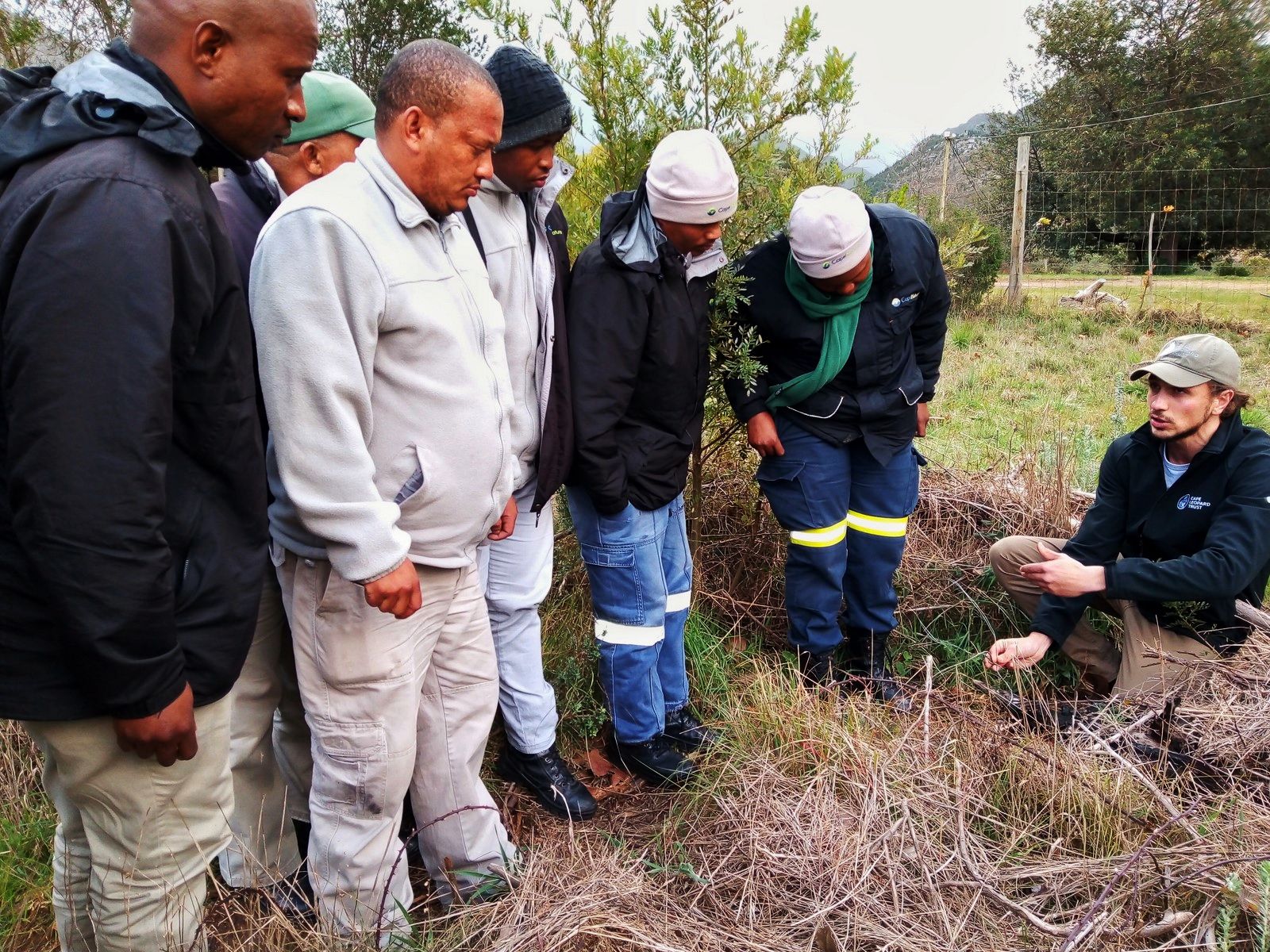
Training conservation officials in snare detection and removal. (Photo: Cape Leopard Trust)
CapeNature and the Cape Leopard Trust officials said that snaring is not an issue limited to the Western Cape. Snaring used to be predominantly associated with forest and bushveld habitats, but it has become clear that the fynbos ecosystem of the Western Cape also suffers from rampant snaring.
“The use of snares to hunt wild animals is a global conservation issue,” they said.
Hunting by means of a snare is heavily regulated internationally, with most countries having legislation applicable to the use of snares to hunt wild animals. Penalties vary depending on circumstances unique to each jurisdiction.
In South Africa, in terms of Section 29(d) of the Nature Conservation Ordinance, the use of a trap (which includes a snare) is a prohibited hunting method unless authorised by means of a permit.
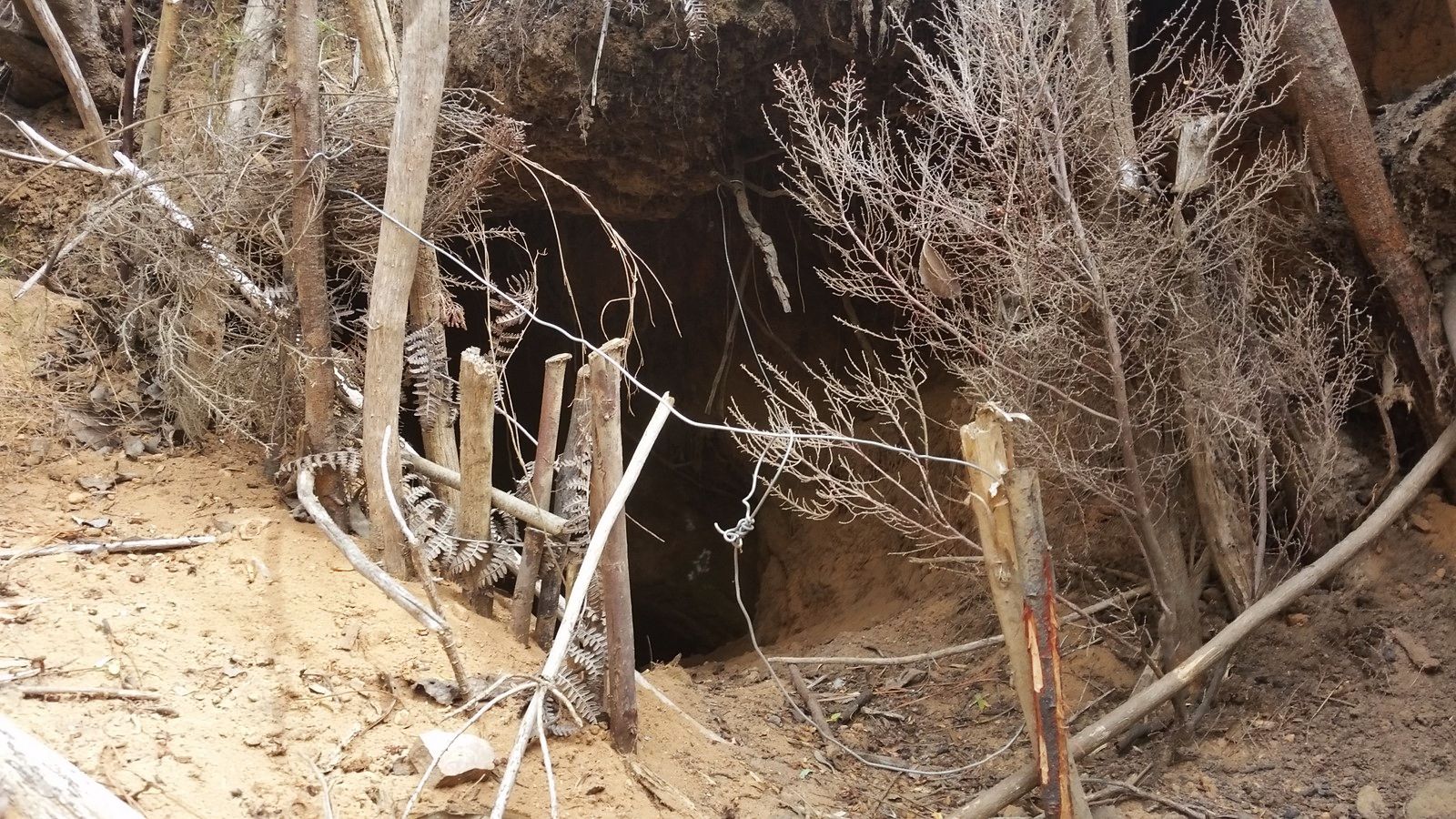
A snare set up in front of an animal burrow. (Photo: Cape Leopard Trust)
Friedman said: “It is extremely difficult to catch a snare poacher in the act of either setting a snare or removing their ill-gotten catch. Of those cases where a suspect has been confronted by a member of the public or law enforcement, the suspects either claim that they were innocently removing the snare (that they just happened upon) or in the cases of suspects caught with animal carcasses, that they found the carcass and were taking it to dispose of or to consume themselves.”
Fines and imprisonment
As it’s extremely difficult to catch people red-handed who are snaring, and even more difficult to link them to snare hunting and to present adequate evidence, prosecution is a significant challenge.
In August 2022, two people were arrested in the Paarl area after being found in possession of the carcass of a leopard that had been killed in a snare. They were convicted and fined R10,000 each.
In September 2022, a person was fined R1,500 for setting a cable snare, ostensibly for bushpig.
Officials from Cape Nature and the Cape Leopard Trust added that one of the main factors in securing a conviction in court is the protection status of the wild animal involved.
Transgressions of the law carry heavy consequences. In general, for endangered wild animals, a perpetrator could face a fine of up to R400,000, 10 years in jail or both.
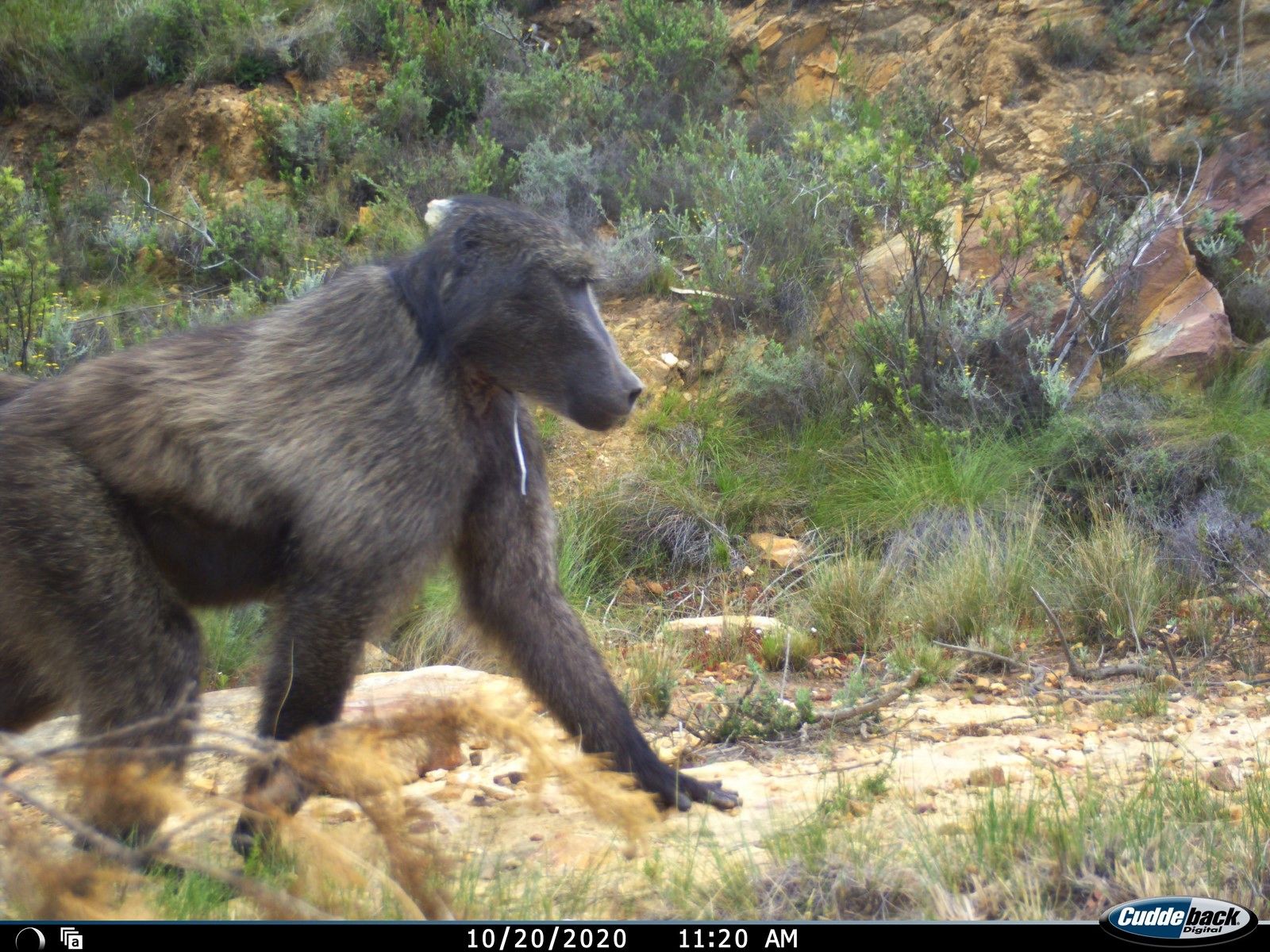
A baboon with broken-off neck snare. (Photo: Cape Leopard Trust)
For protected wild animals, the penalty could be up to R80,000 or two years imprisonment. For wild animals, the penalty could be up to R40,000 or one year in jail. The court can also sentence an accused to an additional fine of up to three times the commercial value of the species involved.
The Cape of Good Hope SPCA has developed a portable DNA-sampling toolkit for use by its inspectors and other agents in the field when attending to snare sites, whereby any snare can be tested in situ for the presence of human DNA. This could conclusively link a suspect to a snare to ensure a successful prosecution.
How to help
If you discover a live wild animal caught in a snare in the Western Cape, call the Snare Free hotline for assistance on 076 127 8485. Keep your distance from the animal, keep noise to a minimum and advise other people to refrain from entering the area. Have the following information available for the hotline operator:
- Location (GPS coordinates/pin preferable)
- Animal species/description (if known)
- Your contact number
If you discover empty snares or a dead animal caught in a snare, take a photo and report it to the Cape Leopard Trust’s online Data Portal. You will need to provide the location and a photograph. Then carefully remove and dispose of the snare/s responsibly to ensure that they cannot be used again.
The groups involved in Snare Free believe that a coordinated response such as the Western Cape Snare Response Strategy will ultimately reduce or even end illegal snaring.
Friedman said: “The Snare Free Initiative is just the kind of response we have been asking for, for years, to be able to proactively address and respond to incidents of illegal wildlife hunting and poaching within the province, whilst at the same time empowering the public to be a part of the solution.” DM
To read all about Daily Maverick’s recent The Gathering: Earth Edition, click here.






















 Become an Insider
Become an Insider
We caught guys with ensnared small buck between Khayalitsha and Mitchell’s plain in the 90 s when the police still did their job
I came across a dog who was caught around its tummy and after many days eventually his bladder burst and he died a horrible death. I found a porcupine that eventually bit off its own leg to free himself. How far has “civilization” gone. People have no problems to conservation of beautiful animals (rhino) but should we not put in all our efforts (Rc) into eradicating the cruel practice?